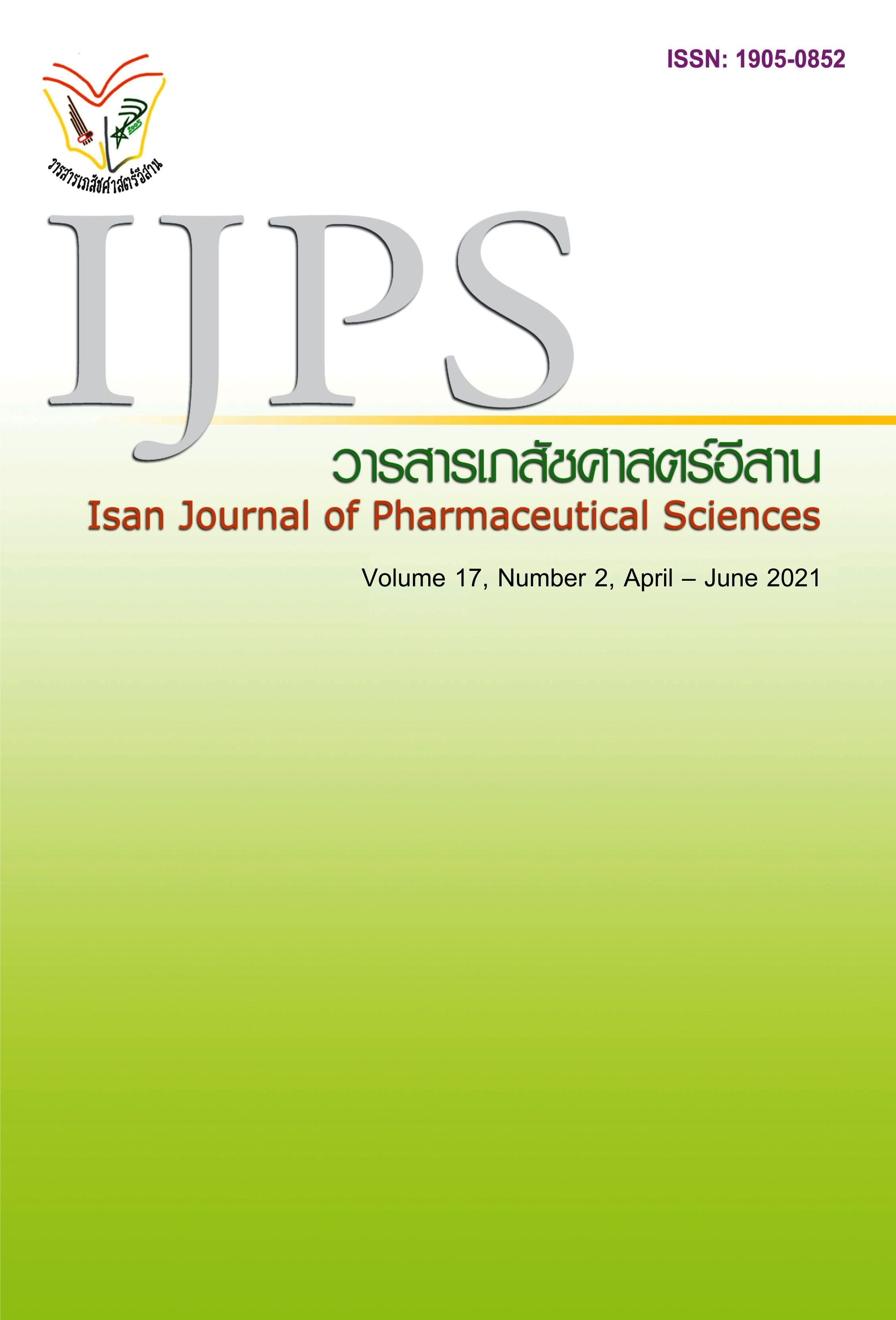Reducing waiting times for anti-tuberculosis drugs at the outpatient pharmacy of Nan Hospital
Main Article Content
Abstract
Tuberculosis patients at Nan Hospital benefit from a one-stop service offered by the tuberculosis clinic to have their prescriptions verified by clinical pharmacists before being dispensed. However, patients not attending the clinic do not have such opportunities. This means that their prescriptions are not verified prior to reaching the outpatient pharmacy department, which can result in longer waiting times for patients if pharmacists need to consult with doctors about prescribing inaccuracies or new prescriptions. According to medication safety standards, clinical pharmacists need to verify prescriptions before drug dispensing to minimize redundancies and correct discrepancies. For effective verification, users need information and technology systems that provide access to information about patients and drugs. Objective: To reduce waiting times for tuberculosis patients at the outpatient pharmacy department of Nan hospital. Material and Method: This study used an action research model. In collaboration with the information and technology department, we implemented a program that provides necessary patient information to the outpatient department to establish effective verification criteria for prescriptions prior to drug dispensing. Waiting times from before (May-September 2019) and after (November 2019-March 2020) implementation of the program were collected. The number of inaccuracies in prescriptions was collected and are presented as percentages. The mean differences in waiting times of both groups were compared using independent t-tests. Results: Before implementation of the program there were 57 prescriptions filled with an average waiting time of 43.09 ± 44.59 minutes. After implementation of the program, the average waiting time from the 55 prescriptions was reduced to 34.24 ± 13.51 minutes (p > 0.05). After using the program, 10 prescription inaccuracies could be divided into 3 types: 7 cases of dosage too low (12.72%) 2.), 2 cases of dosage too high (3.64%) and 3.), and 1 case of an incomplete prescription (1.82%). Conclusion: The newly-developed program that integrates information for verification of prescriptions could be used to establish the criteria for the verification of prescriptions prior to drug processing, which minimized inaccuracies in prescriptions and reduced waiting times for tuberculosis patients at Nan hospital.
Article Details
In the case that some parts are used by others The author must Confirm that obtaining permission to use some of the original authors. And must attach evidence That the permission has been included
References
Amnuay Preaukpakphum. Basic framework of drug system. Bangkok: The association of hospital pharmacy (Thailand); 2020.13-4.
Anuwatt Suphachutiku. Why LEAN in healthcare. LEAN for applying health services Workshop, 2016 Aug 1-4; Bangkok, Thailand. Available from: https://www2.si.mahidol.ac.th/km/knowledgebase/article/lessons/3001/
Bureau of Tuberculosis, Department of Disease Control, Ministry of Public Health, 2018. National Tuberculosis Control Programme Guideline. Aksorn Graphic and Design Publishing House, Bangkok, Thailand.
Chancharauk Ratandetchsakul, Pasakorn Ratanadetchsakul. Pharmacist and prescription review process. (cited 2020 March 16). Available from: https://ccpe.pharmacycouncil.org/index.php?option=article_detail&subpage=article_detail&id=779
Charoensri Chinvarakorn. Reduction of Drug Dispensing Time for Out-patients at Somdetphraphutthalertla Hospital. Journal of Health Science, 2016; 25: 664-672.
Chattraporn Choomjit, Yaowaluk Aumrumphai. Medication management system for medication safety in hospital; an analysis on problems and opportunity for improvement. Thai Pharmaceutical and health science Journal, 2009; 4(1): 127-135.
Kanokwan Prompanjai, RangsikarnNakburin, ChanonNgamtin. Development of the System for Screening and Analysis of Prescriptions of Inpatients Maharat NakhonRatchasima Hospital. Journal of Health Scienc, 2016; 25: 446-55.
Kedsarin Khoonthong, Anjana Fuanchan. Development of medication service system to reduce medication error for patients with chronic diseases at Pakhai primary care unit, Ayutthaya. Isan Journal of Pharmaceutical science , 2015; 11 (supplement): 82-88.
Parinda Chanbancherd, Bussara Wajajamroen, Jiraporn Kumkaew, Artittaya Thaipanich*, Attaya Plangsaguan and Nittaya Papsamoot. Study on System Design for Efficiency Enhancement by Waste Reduction Technique in Out-patient Pharmacy Unit at NopparatRajathanee Hospital. Thai Pharmaceutical and Health Science Journal, 2012; 7(4): 162-166.
Porkaew Raungpeng. Simulation of queuing systems for outpatient service: a case study of the internal medicine at Phatthalung hospital. Veridian E Journal, 2013; 6(3): 834-845.
Rungfha Saranseth. Systemic approach to present Chemotherapy medication errors in Songklanagarind Hospital. Songklanagarind Hospital Journal, 2005; 27(5): 415-423.
Sasinipa Boonpitak, Kornpraphop Ratanavijit. Application of Lean concepts for reducing waiting time: A case of outpatient department at Phrapokklao Hospital Chanthaburi. Thaksin Journal, 2018; 21(2): 21-31.


